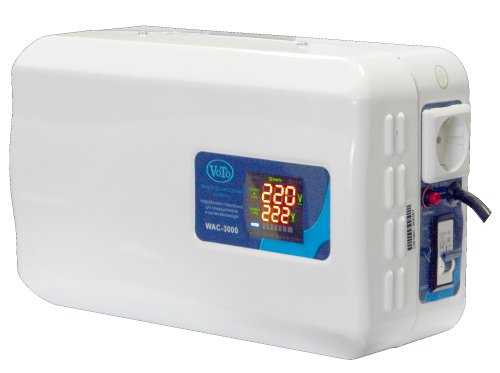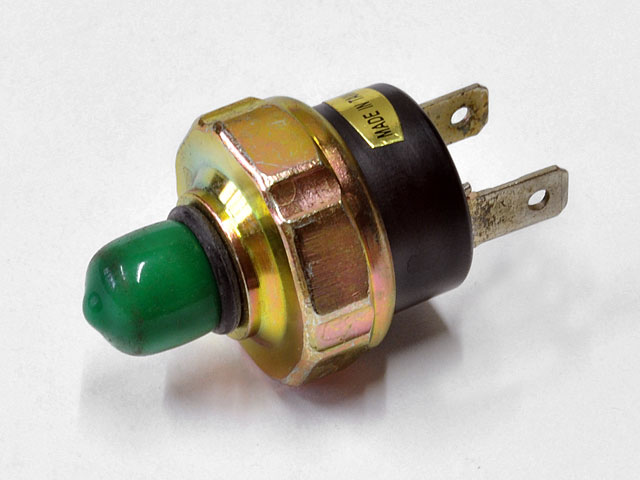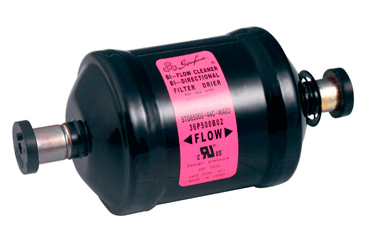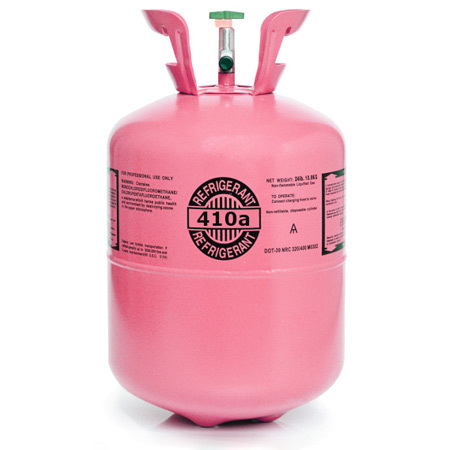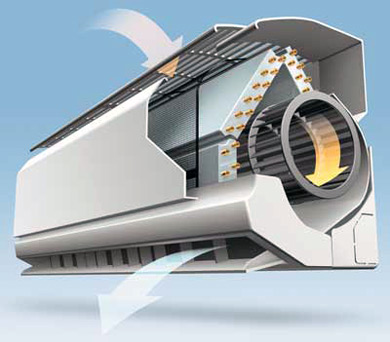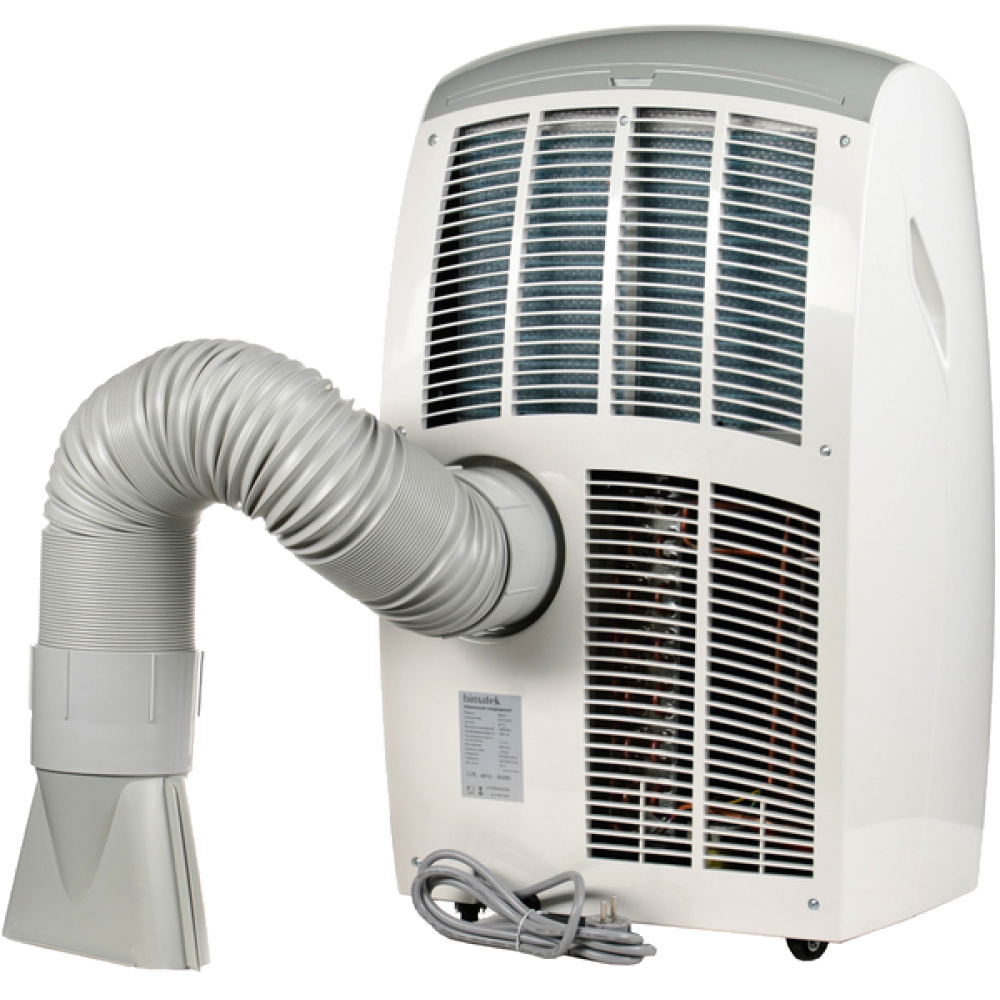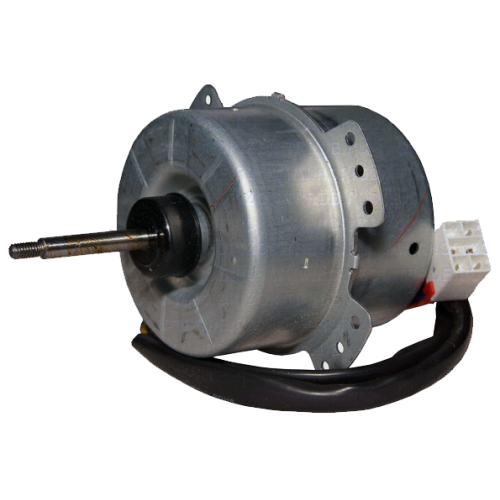For air conditioning of residential premises and office buildings, split systems of various types and types are installed. Split system is a device consisting of two blocks: outdoor and indoor. The first is taken out into the street, the second is mounted in the room. Both modules are connected to each other by a copper pipeline, through which the working gas (freon) circulates, and electrical communications.
- Types of split systems and types of indoor units
- The principle of operation of the indoor unit of the air conditioner
- Indoor units of wall type and their dimensions
- Semi-industrial air conditioners and their sizes
- Air conditioner specifications
- Features of the air conditioner installation
- Indoor unit of the air conditioner on the loggia
- Ways to mount the air conditioner to a wall or ceiling
- Schematic electrical diagrams of the air conditioner
- Service and diagnostics of air conditioner malfunctions
Types of split systems and types of indoor units
View is a more general concept applied to technical climate control devices in relation to their purpose for certain buildings. The type has a narrow semantic focus, which means any feature of the structure or design.
Split systems are subdivided by type and type. There are two types of two-component plants: domestic and commercial or semi-industrial. The first ones are mounted in apartments or small offices, the second ones - in shops, hairdressers and other similar establishments.
All split systems are subdivided into types regarding the construction and design of the indoor unit:
- wall-mounted;
- cassette;
- columnar;
- channel;
- floor and ceiling.
Each manufacturer produces split systems with different types of indoor units, completing them with certain functions and a standard set of operating modes, which include cooling and ventilation of the air in the room. It is the parameters of this part of the system that justify the choice of buyers.
Regardless of the size and external design, any room module consists of:
- heat exchanger (evaporator);
- fan;
- air distribution grille;
- input filter;
- guide blinds;
- front panel;
- LEDs;
- temperature sensors.
Fine filters, a winter kit and other additional elements are optional at the request of the customer. May include a mounting plate if the unit is wall-mounted. Operation parameters are set from the remote control. Some models of expensive equipment have the ability to control functionality via the Internet, from a telephone or from a central controller.
The principle of operation of the indoor unit of the air conditioner
In general, cooling looks like this: in order to absorb heat from the room and generate coolness, the indoor unit fan draws heated air from the room, after which the process of heat absorption by the refrigerant begins as it passes through the cold coil.
The refrigerant is liquid gas (freon), due to which the air is cooled. In fact, it is a heat carrier. In the process of transferring cold to the air and taking heat from it, it changes its state, that is, it evaporates. This takes place in the heat exchanger of the indoor unit. Here, from a liquid state, freon passes into a gaseous state. He took away the heat, the air cooled down and flows through the fan back into the room. The heat dissipation process is already going through the outdoor unit.
Simply put, the role of the indoor module is to draw in warm air, cool it and return it to the room.When the device is operating for heating, on the contrary, it becomes a conductor of heat, changing the functions performed with the outdoor module. All types of indoor units work according to this principle.
Indoor units of wall type and their dimensions
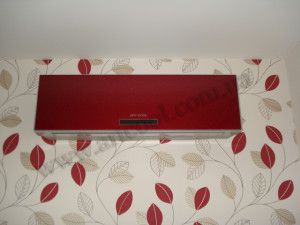
Household air conditioners include wall-mounted models - the most popular among buyers. They resemble in their shape a rectangle or square, like LG's ART COOL GALLERY wall appliances. They are hung on the wall in a place convenient for the user so that the treated air does not escape to the person's permanent residence.
The required size of the indoor unit of the air conditioner is selected in relation to the roomy capacity of the room. Each manufacturer has a line of large, standard and even smaller climate control devices.
The concept of the size of the indoor unit of the air conditioner includes such values as:
- height;
- width;
- depth.
The minimum height can be about 24-25 cm, width - 70-74 cm, and depth - 18-19 cm. For example, a company Gree produces a series of wall splits with an indoor unit depth of only 18 cm, which greatly expands the possibilities of installing such a device at various points in the room.
The maximum height of the wall-mounted room unit can be up to 30-32 cm, the width is 110-120 cm, and the depth is about 30 cm. For example, the MITSUBISHI ELECTRIC company produces a series of inverter splits with just such parameters.
If the indoor unit of the air conditioner has a non-standard design, for example, it is supposed to be placed vertically in the room, then these parameters can vary greatly.
As a rule, air conditioners, and not only wall-mounted ones, have a direct dependence of the size of the indoor unit on its internal structure, or rather, on the size of the heat exchanger and the space for blowing it with air. The smaller they are, the smaller the device, and the worse the performance.
Some manufacturers maintain normal performance while downsizing by increasing fan speed, but a new disadvantage is increased noise. This is of paramount importance when choosing an air conditioner for an apartment. This nuisance can also be avoided by lowering the air consumption. Although in any case, a very powerful split cannot have a small internal module.
Today, some manufacturers have turned their attention to the production of non-standard room modules for wall-mounted splits. For example, LG in the ARTCOOL series offers square devices with the ability to change the picture on the case, and CARRIER everyone was surprised by the exit of the vertical indoor unit of the air conditioner with non-standard air distribution in two directions, which is more typical of floor-ceiling models. The company GREE has been offering angular devices for several years, but it is difficult to find them in Russia.
As a rule, buyers prefer both the vertical indoor unit of the air conditioner, and the corner, and the square either because of space saving, or purely from design preferences.
Semi-industrial air conditioners and their sizes
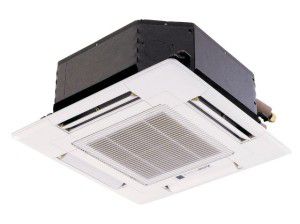
The remaining types of the indoor unit of the air conditioner are classified as semi-industrial equipment, but low-power models of such devices can be installed in ordinary apartments.
The cassette module has a square shape and fits easily into a false ceiling cell. Its dimensions can be 600 × 600 mm or 800 × 800 mm, although some manufacturers produce a series of super compact cassettes with dimensions of 500 × 500 mm.
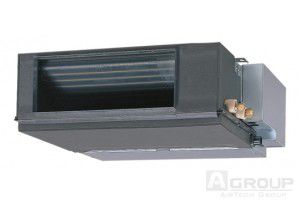
Along with cassette indoor modules, duct devices are sewn into a false ceiling (or wall), which is a hybrid of an air supply unit and an air conditioner. They not only cool the room, but can also freely renew the room air by mixing the outdoor air with the help of additional equipment - an air supply unit.In both types of these climate control units, only the distribution grilles are visible from the outside.
The only drawback is that they require a ceiling space of at least 30 cm for installation.
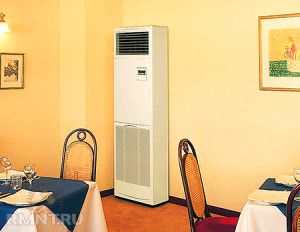
Column air conditioners are like an elongated cabinet. They are located in large rooms on the floor where a high cooling capacity is required. Their dimensions significantly exceed the dimensions of any wall-mounted model, but this is a necessity, since it is impossible to achieve such power in another way.
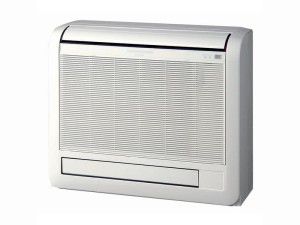
Floor-ceiling splits are quite compact and at the same time quite efficient for rooms up to 100-120 m². Their internal block is shaped like a modern radiator. They are easy to care for and use. The main advantage is two ways of attaching such an indoor unit: to the wall and to the ceiling. If the module is hung on the wall just above the floor, then the airflow goes in two directions, capturing even the most difficult and inaccessible areas of the room. That is why floor and ceiling models are liked to be mounted in rooms with a complex configuration.
Air conditioner specifications
Not only the design, but also the technical characteristics of the indoor unit of the air conditioner determine the purchase of a particular system. Indeed, depending on how correctly they were selected, the device will either work properly, or it will quickly use up the built-in potential.
What are the main technical characteristics that are important when selecting the indoor unit of the air conditioner for the room? Let's look at the example of the LG air conditioner of the ART COOL GALLERY series.
| Model | Power consumption, kW | Cooling capacity, kW | Heating power, kW | Air consumption, m³ / hour | Dimensions (W × D × H), mm | Recommended area, m2 |
| A09AW1 | 0,92/0,83 | 2,64 | 2,73 | 450 | 600×146×600 | 20-25 |
For each manufacturer, these data can be supplemented by other parameters, therefore, the technical characteristics of the indoor unit of the air conditioner are usually looked at either on the nameplate or in the user manual.
Conclusion: any indoor unit is endowed with cooling and heating capacity (kW), electricity consumption (kW), air consumption (m³ / hour), as well as certain dimensions and weights.
With the power consumption, the issue is a little complicated by the fact that it may not be indicated specifically for the indoor unit. More often in the characteristics they write the consumption parameters in general for a split system, while it consumes much less than an outdoor device - on average, 100-200 watts.
Features of the air conditioner installation

The installation of a wall-mounted room unit can be very varied. Most often, the block is fixed to the right or left of the window and as close to the outside as possible so that the length of the route does not exceed the recommended length of 5 meters. If, if necessary, these values are increased, then the line is sewn into a gutter in the wall or neatly placed in a decorative plastic box along with the rest of the connecting communications.
Other types of indoor units are mounted in the places designated for them:
- channel - in the suspended structure of the ceiling of a room or, to avoid noise, in a non-residential area - in a closet, corridor, restroom;
- cassette - in the suspended ceiling structure so that the airflow from the grate goes not to the places where people are staying, but to the unused area;
- floor-ceiling - on a wall 15-20 cm from the floor or on the ceiling in a place where the air will disperse over the entire surface;
- columnar - on a flat, solid floor.
The indoor unit should not be exposed to direct rays of the sun, and any exposure to heat sources is also excluded.
Indoor unit of the air conditioner on the loggia
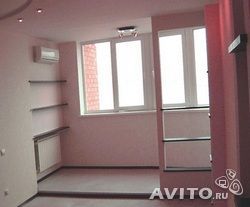
Sometimes the customer may require the installation of the indoor unit of the air conditioner on the loggia, explaining this by fear of getting cold, limited space in the room, unwillingness to cut a wall or have a long track packed in a box.Another reason for such a request may be the inability to find a zone in the room that the residents would not use. This happens when people are very crowded in one room.
Is it possible to install the indoor unit of the air conditioner on the loggia, if so, what requirements should be taken into account?
- It excludes the ingress of warm air through the window and the cracks under it. The glass is hung with thick curtains, and the walls are sealed;
- It is necessary to take out the door and window openings between the living area and the loggia so that the treated air circulates freely throughout the territory;
- They give preference to inverter models so that with a heavy load (and it will be necessary with such an arrangement of the device), the compressor does not work in a constant start-stop mode;
- Cold power is taken with a good margin, since to reach 22 ° C in the room, you will have to set 18 ° C on the loggia.
Even when the required conditions are met, problems arise regularly. First, the temperature difference will still be felt. Simply put, the loggia will have a north pole, while the room will only get a little cooler. Secondly, the potential of even an inverter will still be used up much faster.
Competent experts will never advise installing an indoor unit from an air conditioner on a loggia, based on all of the above points.
Ways to mount the air conditioner to a wall or ceiling
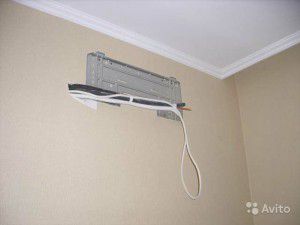
There are two types of wall or ceiling mounting depending on the type of indoor unit. Household split systems are hung on mounting plates. This happens according to the following scheme:
- holes are drilled in the wall;
- dowels are inserted into them;
- the mounting plate is screwed on;
- an air conditioner is hung on it.
Thus, the indoor unit is attached to the wall only for wall-mounted models. Commercial modules are fixed with special studs according to a different scheme:
- mark the mounting points on the ceiling;
- drill holes;
- insert collet mounts;
- studs are screwed into them;
- a block is hung on the pins;
- tighten the nuts.
It is worth remembering that the installation of duct systems with air ducts is carried out at the stage of construction and repair work. The remaining splits can be installed at any time.
Schematic electrical diagrams of the air conditioner
For the correct installation of the indoor module, the schematic electrical diagrams of the air conditioner are used, which indicate all inter-unit connections and their connection points. Installation cannot be carried out without them, since there is no single scheme, and they are completely different for different types of modules. The same goes for on / off and inverter splits.
For each manufacturer, the diagram of the indoor unit of the same type can vary greatly, therefore, only the one that is attached in the manual by the manufacturer is used.
Service and diagnostics of air conditioner malfunctions
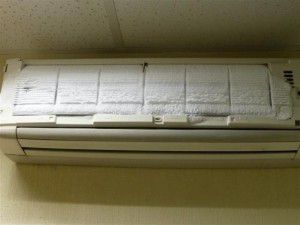
Each split system needs regular maintenance, which involves cleaning the blocks from external and internal contamination, as well as troubleshooting and refueling with freon as needed.
Can I somehow independently clean the indoor unit of the air conditioner at home? Yes, this is real, but undesirable, since an inexperienced user can damage any part of the device. If, nevertheless, there is no way to call the master, then the person should know how to disassemble the indoor unit of the air conditioner in order to wash the filters, fan and heat exchanger.
First, the decorative panel is removed, for this, the latches on the sides are pressed, and the case cover easily comes off. Then the filters, fan, condensate collection tray are carefully removed and washed under running water. Wipe the heat exchanger with a damp cloth, as it is a stationary part. After cleaning, all elements are wiped dry and reinstalled.
At the end of the article, you can watch a video on how to disassemble the indoor unit of the air conditioner and how to clean it without the help of specialists.
To carry out these actions, you will need a soft microfiber cloth and a special foam for cleaning split systems.
Even if there are no problems with how to clean and disassemble the indoor unit of the air conditioner, then the user himself will not be able to refuel and diagnose, so you will have to call specialists with professional equipment and materials.
In what cases may you still need the help of a wizard? The user should be alerted to such points as:
- poor cooling;
- unusual noises and vibrations;
- block freezing;
- inability to turn on the air conditioner;
- leaving the device in the mode of fault codes.
Many users are interested in why the indoor unit of the air conditioner freezes, and how serious it is. This sign suggests that:
- the split system lacks freon;
- there was a strong contamination of some working units and filters;
- the device is used at an unacceptable temperature.
By measuring the working pressure, the master will immediately determine if there is actually not enough freon in the system. Contaminated internal components can be seen on your own by removing the housing cover. Also, the cause of freezing of the indoor unit of the air conditioner can be a too long route, which the installers simply did not refuel during installation.
If any deviations are noticed in the operation of a split system of any type, you must immediately invite a specialist.


